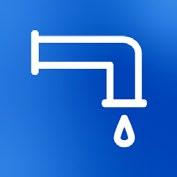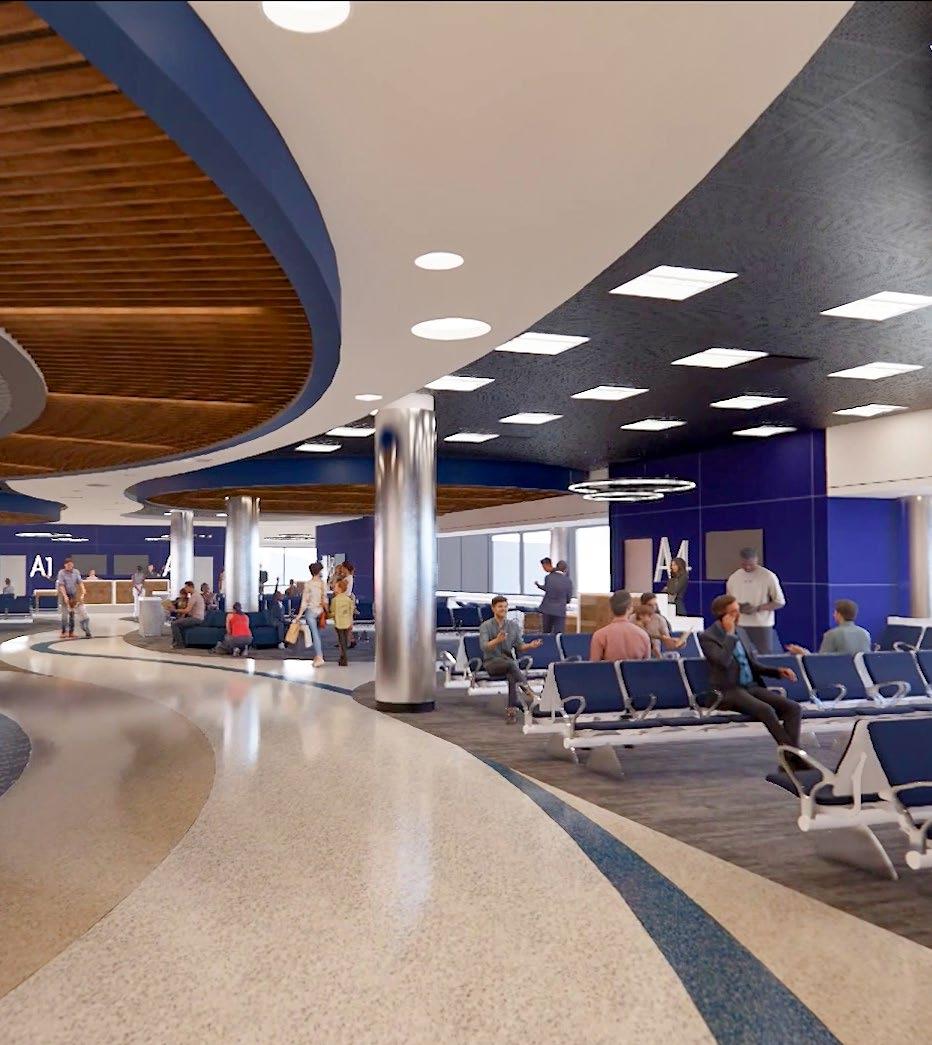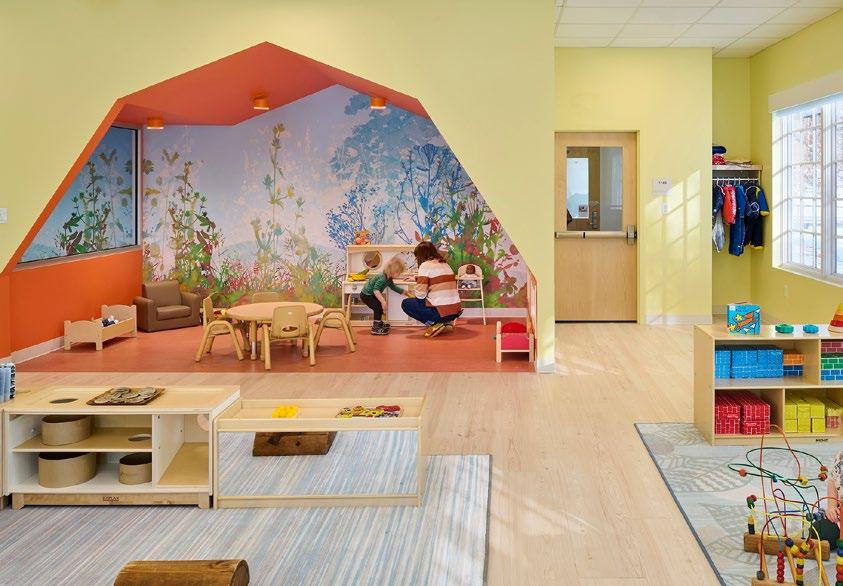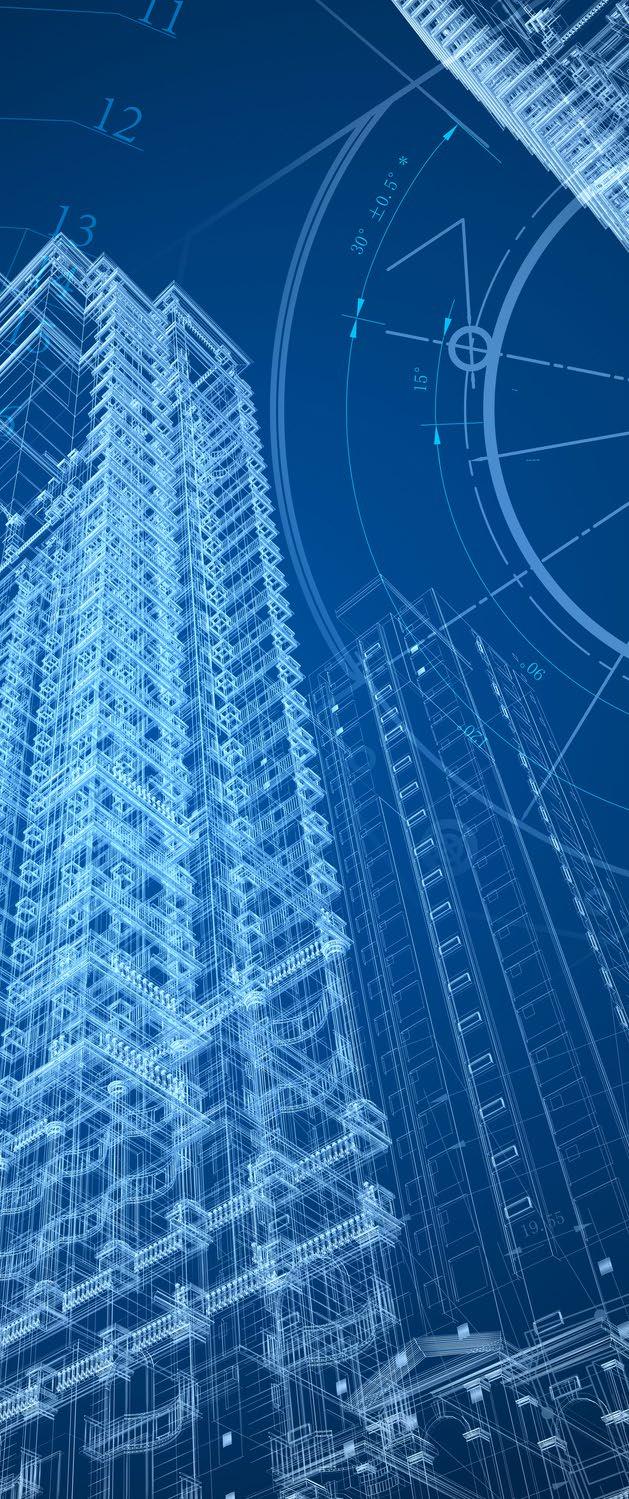






The buildings team at CHA is committed to monitoring trends in decarbonization, embracing new technologies, and bringing innovative solutions to our clients and partners as we work together to improve the built environment and reduce environmental impacts.

When we think of pollution and damage to the environment from a building perspective, our mind jumps to visuals of factories and smokestacks. While they have certainly contributed to our climate challenges, the overall built environment is also a significant contributor. It might surprise you to learn that according to the American Institute of Architects (AIA), the built environment creates a staggering 40% of the world’s emissions. Consequently, steps to address the carbon footprint of the built environment and work toward a more sustainable future are now starting to focus on this significant piece of the climate puzzle. The building sector is now on a path of decarbonization and meaningful changes in all buildings that will ensure equity, affordability, and resiliency into the future.
Sustainable design and construction is not a new concept but one that has certainly become a focus of the industry. To date, reducing carbon emissions has primarily focused on efforts once a building is built, including building for net zero energy, where the building produces as much energy as it consumes. There are also a number of sustainable building performance standards that apply to the built environment, including LEED, smart buildings, and passive buildings. All these efforts have us moving in the right direction, but now there is even heightened awareness that we must address the issue of sustainability in every aspect of the building and design process and also look to make meaningful changes in existing structures and systems.
The building sector will play a key role in achieving economy-wide decarbonization and reducing emissions to meet climate targets. Following in the steps of the Carbon Reduction Program for transportation, the U.S. Department of Energy released a comprehensive plan for buildings in April, “Decarbonizing the U.S. Economy by 2050: A National Blueprint for the Buildings Sector.” This strategy document looks to reduce building greenhouse gas emissions (GHG) by describing the urgency of this work and then laying out specific strategic objectives.
Increasing building energy efficiency by promoting energy-efficient practices
Accelerating emissions reductions by encouraging the adoption of clean energy alternatives
Transforming the grid edge by enabling distributed energy resources
Minimizing embodied life cycle emissions by placing emphasis on using sustainable building materials
Reducing on-site energy use intensity in buildings by 35% by 2035 and 50% by 2050*
Reducing on-site GHG emissions in buildings by 25% by 2035 and 75% by 2050*
Reducing electrical infrastructure costs by tripling demand flexibility potential by 2050 vs. 2020
Reducing embodied emissions from building materials and construction by 90% by 2050*

In addition, the blueprint lays out aggressive targets to reduce GHG in U.S. buildings by 65% by 2035 and 90% by 2050 compared to 2005 levels. This comprehensive plan underscores the vital role of buildings in achieving climate goals. These bold and ambitious goals require all stakeholders in the building sector to rethink how they approach design, construction, operation, building rehabilitation, and retrofits. They will be most challenging in underserved communities where funds are limited, and the need to make impactful changes is the greatest.
Incorporating efficient energy options as part of our design philosophy is a priority for our team. Our engineers, architects and designers have implemented a wide range of sustainable solutions, including geothermal wells, photovoltaic roof panels, river water heat exchange, and wastewater heat recovery. We also use low-emitting building materials, high-performance building envelopes, and water-efficient landscaping, as well as energy-efficient LED site lighting, stormwater capture and reuse, and daylight-harvested lighting options. We know this list will continue to expand as we discover and execute designs with forward-leaning technologies to reduce energy usage and emissions.


For more information, contact Sean Sweeney at ssweeney@chasolutions.com.
Read More: Decarbonizing the U.S Economy by 2050: A National Blueprint for the Buildings Sector.

CHA has been acquired by H.I.G. Capital (H.I.G.), a leading global alternative investment firm with $62 billion of capital under management. “H.I.G. brings tremendous financial and operational resources with a great track record supporting companies and delivering value,” said CHA Holdings CEO Jim Stephenson.
Read more here.


2023 Pillar of Excellence Winners
CHA’s Pillar of Excellence Awards program annually shines the spotlight on the “best of the best” in CHA project work — projects that created solutions for our clients’ most challenging issues and delivered innovative and sustainable results.


The Main and R.L. Pratt Water Treatment Plants in Palm Springs, FL, were the first two water treatment facilities in the U.S. to use magnetic ion exchange (MIEX®). This new technology removes dissolved organic carbon and other negatively charged ions from water. These operating systems were also the first to be upgraded to the latest regeneration technology and incorporate supervisory control and data acquisition (SCADA) improvements. CHA provided planning, design, permitting, and engineering services to upgrade and modernize the two water treatment plants.

This work fully integrated the MIEX® system with the water treatment plant’s SCADA program improvements, reduced the cost of salt supply by about 20%, and reduced waste brine generation by about 30%. Work on this project proceeded while maintaining operations throughout construction, came in below budget, and ultimately improved operational efficiencies.


SUSTAINABILITY AWARD
The Indianapolis Airport Authority (IAA) identified the need to rehabilitate Runway 5L-23R and a portion of Taxiway B at Indianapolis International Airport (IND), both having served for over 20 years and undergone prior repairs. Approximately 58,000 square yards of pavement were replaced alongside routine concrete repairs.
CHA provided project administration, preliminary construction safety and phasing plan development, bidding assistance, and design at various stages, all in line with Federal Aviation Administration standards. CHA
Read more here.


also facilitated a contractor outreach event to engage stakeholders, gather input, and improve project plans, and organized a project charrette for IND users and stakeholders to share preliminary construction plans and scope. Later, a secondary agreement was established for construction phase services where CHA managed the project, coordinated construction, provided technical support to on-site representatives, and facilitated communication regarding construction.
In February, CHA announced it acquired D’Huy Engineering, Inc. (DEI), an engineering and project management firm based in Bethlehem, PA, serving educational, municipal, commercial, and industrial clients.



The Champlain Hudson Power Express (CHPE) project will propel New York City into a sustainable future with clean, renewable hydropower. Spanning 339 miles, CHPE will supply 1,250 MW of hydropower from Canada to Queens through a buried high voltage direct current (HVDC) transmission line.
CHA is providing engineering design, environmental support, permitting, and inspection services for approximately 84.5 miles of upland cable installation.



CHA’s design services include approximately 90 horizontal directional drilling crossings for HVDC electrical transmission cables and a telecommunications line in the Hudson River Valley, optimizing route choices to avoid environmental disruptions.
The buried transmission line reduces its environmental footprint and enhances resilience against severe weather conditions while bolstering overall safety measures.
After years of development, CHA was thrilled to launch renu360 in early 2024. The renu360 platform allows building owners, finance officers, facility managers, and municipalities to fully understand the condition of their built assets and the level of investment needed to maintain these facilities. This tool allows your facility and planning team unparalleled insight into your built assets so they can provide proper stewardship of your facilities.
Read more here.


Damage from a hurricane/tropical storm led to the collapse of over a thousand trees, numerous utility poles, and electric lines, resulting in widespread road closures, disruptions to a commuter railroad, and impacts on the functioning of communities at all levels. The aftermath left more than 645,000 residential and commercial customers without power, affecting essential municipal and lifesustaining services.
CHA provided engineering design services for a storm hardening and resiliency initiative to fortify these communities and critical infrastructure against future severe weather events. This initiative aimed to enhance storm resilience across 178 circuits of mainline distribution spanning 450 miles and mitigate customer service interruptions.
The project team included approximately 40 professionals from CHA’s electric distribution, asset management, environmental, aviation planning and programming, and owner’s project management teams. We leveraged technology, including a tablet-based mobile data collection tool for real-time data access and a web-based project dashboard for efficient collaboration.


CHA Honored with ACEC Engineering Excellence Awards All Over the Map NEWS
From bridges to water transmission mains, and airports to sports complexes, CHA picked up ACEC Engineering Excellence Awards for impressive work in multiple states and earned two National Recognition Awards. Read more about these impressive CHA projects:
• ACEC Florida
• ACEC New York
• ACEC Connecticut
• ACEC Virginia
• ACEC Massachusetts
• ACEC Ohio





EXCELLENCE: COMMERCIAL & INSTITUTIONAL



The Albany County Airport Authority has teamed with CHA on a transformative airport terminal expansion project. CHA’s design is intended to create warmth and a sense of place from the moment the traveler arrives at the airport and includes expanding the TSA security check-in, queuing and repose space, upgrades to the ticketing and baggage claim, renovation and upgrades to the Business Center, and the design of an airside children’s play area and sensory room.
A light, airy canopy draws the visitor toward the large central connector. Green space and a courtyard will be added. Digital signage and bright, visible wayfinding will guide travelers through the bright and inviting space. The queuing area will be enlarged, and after passing through the TSA checkpoint, travelers will find ample space to recompose.
Families with children will be able to relax while their children play and interact in a new play area, and those with sensory needs can take a moment to disconnect and relax in a new sensory room.
Jay Wolverton Featured in ACEC Podcast
Chief Growth Officer Jay Wolverton, currently serving as ACEC National Board Chair, was the featured guest on the ACEC Engineering Influence podcast.
Listen here.


The Northeast Extreme Tee beam, or NEXT beam, is an innovative technology developed by CHA and PCI Northeast. It offers a cost-effective, longer-lasting alternative to conventional structures, surpassing adjacent box beams—a common choice for short- and medium-span bridges in the Midwest.
Unlike box beams, the NEXT beam eliminates unreinforced joints, enhances inspection visibility, and boasts superior durability. It also provides flexibility in bridge width, accommodates utilities, and accelerates construction timelines, minimizing traffic disruptions. The Indiana
Department of Transportation (INDOT) recognized the need for an alternative bridge design due to maintenance challenges and premature deterioration.
CHA proposed the NEXT beams as a solution, addressing concerns such as water intrusion with reinforced closure pours. The NEXT beam demonstrates a superior solution for short- and medium-span bridge replacements across the Midwest. CHA has strengthened its partnership with INDOT and solidified its role as a leading authority on NEXT beam technology in the region
CHA Earns AIA Maine Award for Design of University of Maine Childcare Center NEWS
CHA was awarded an AIA Maine Merit Award for Excellence in Architecture in the Renovation & Adaptive Reuse category for the Sweatt-Winter Child Care and Early Education Center at the University of Maine at Farmington.
Read more here.



CHA can quickly adapt to changing market conditions. By leveraging technology as a strategic part of our business, we improve overall efficiency and productivity ...
Doing more with less is not a new concept. Regardless of our business or role, we are frequently tasked with optimizing resources and strategically reevaluating our processes, staffing and priorities to accomplish more when resources are constrained. The AEC sector has been able to embrace technology to improve efficiency and meet the growing demands for services and expertise despite being challenged with an ongoing shortage of labor across our industry.
As a tech-enabled company, CHA has made it a priority to leverage a broad range of technology and tools to enhance our delivery of services, drive efficiency across our business, facilitate the development of innovations, and improve the solutions we provide to our clients.
AI is one of the technologies rapidly changing our work and industry, providing us with opportunities to improve efficiency, productivity and problem-solving. There has been an accelerated or super cycle adoption of AI in widely used software tools such as Microsoft Office, impacting our entire organization. AI is being used to automate tasks and analyze data more quickly and efficiently. In addition, we are quickly adopting AI tools in the engineering and architecture design space to produce designs more efficiently in sectors such as water resources and transportation infrastructure. We are also tapping into AI tools to generate alternatives, sparking innovation and creativity and using these rapidly evolving AI tools to produce and modify high-resolution renderings in real time. The brisk pace of technology innovations and


adoption is both exciting and challenging as we add these AI tools to our already expansive toolbox.
Reality capture technology is yet another advanced technological tool that is empowering our engineers, architects and designers to create accurate digital representations of physical spaces through the use of
drones and laser scanning. Once a digital model or representation is created, there are a multitude of uses, from site documentation to virtual walk-throughs that improve quality and efficiency as projects progress through design and construction. Virtual reality tools are a subset of reality capture that can significantly improve the way we view and collaborate across teams and with clients.

CHA achieved a CDP score of B on the 2023 CDP Climate Change Score Report. This notable accomplishment positions CHA above the North American regional average of C, the Global average of C, and the Specialized Professional Services Sector average of C, and puts the firm in the highly regarded Management band. CDP believes that improving corporate awareness through measurement and disclosure is essential to the effective management of carbon and climate change risk.
This outstanding CDP score serves as a powerful affirmation that CHA is on the right path and is poised to achieve even greater sustainability milestones in the future.
Read more here.
CHA has ranked #65 (up four spots) on Engineering News-Record’s (ENR’s) recently published 2024 Top 500 Design Firms list. CHA also ranks #50 on the Top 100 Pure Designers list. Our ascension in the rankings reflects the trust that our clients have put in CHA to support their most challenging projects and our teams’ continued success in delivering innovative solutions.




Emerging as a Tech-Enabled Company (cont.)
Instead of viewing drawings and documents, this technology facilitates virtual project walk-throughs and the ability to view a project from the inside and outside, rotating 360 degrees in all directions. The technology can also integrate all aspects of the project life cycle and workflow, overlay models with drone scans for comprehensive site analysis, and illustrate complex mechanical rooms at a 1:1 scale. Users can even become avatars within models where they can interact with surroundings in real-time or create virtual meeting spaces to present ideas, mark up designs, and select items for further inspection and review.
Our team has recognized that BIM (Building Information Modeling) is more than just 3D modeling; it provides datarich collaboration. BIM can be used to create detailed digital representations of buildings, capturing not only geometry but also information about materials, costs, and schedules, enabling effective communication among stakeholders and streamlining decision-making during design, construction, and facility management. Our BIM team also oversees clash detection, coordination, and resolution leading to project success. BIM can integrate with AI tools seamlessly into our workflows, allowing us to use AI algorithms to process vast datasets, provide predictive maintenance insights, optimize energy efficiency, and assess project risks. For example, you can automate clash detection processes where AI algorithms identify clashes between architectural, structural and MEP elements, minimizing rework. There’s a synergy when BIM and AI are used together; BIM’s detailed models paired with AI’s analytical power enhances accuracy, collaboration and cost-effectiveness.
As a tech-enabled company, CHA can quickly adapt to changing market conditions. By leveraging technology as a strategic part of our business, we improve overall efficiency and productivity and are prepared to scale and innovate to meet our clients’ toughest challenges.
CHA Earns EBJ Business Achievement Award for Diversity & Inclusion
The Environmental Business Journal (EBJ) recognized CHA with a 2023 Business Achievement Award in the Diversity & Inclusion category.
Read more here.

Regardless of your role, you may find yourself at or near an active construction site at some point. In these situations, it is imperative you pay close attention to signage and the active work around you. By always maintaining situational awareness, you reduce your chances of being caught by, caught between, struck by, or in a line of fire accident.
Being struck by an object is one of the most common causes of death in the construction industry. These dangers include being caught by or between moving or stationary objects and being struck by an object or a release of energy.
• Make Use of Engineering Controls: Machine guarding or blocking, including the use of barricades/demarcation to separate people from equipment, and shielding or shoring in a trench
• Establish Administrative Controls: Hazard recognition training, and the development of health and safety plans, and task-specific job hazard analysis
• Use Personal Protective Equipment: Protect feet, eyes, ears, and body from flying objects. Assess the need for specialized PPE (high-visibility clothing, arc-rated gear, etc.)
• Engage in Safe Work Practices: Do not use tools with loose, cracked or splintered handles or impact tools with mushroomed heads; provide training on the safe operation of all equipment; inspect equipment before each use and check that all guards are in place and in working order; and tools according to manufacturer’s instructions
• Use Extra Caution During Overhead Work: Secure all tools and materials; use toeboards, screens, guardrails, and debris nets; and barricade the area and post signs
• Secure Objects That May Become Airborne When Moved: Stack and secure materials to prevent sliding, falling or collapse; keep work areas clear; and secure material against wind gusts.
For more information, contact Anthony Tremblay, Director of Corporate Health and Safety at atremblay@ chasolutions.com.
NEWS Check out CHA’s latest Podcast on Lead and Copper Rule Revisions (LCRR)
The EPA’s groundbreaking move toward a lead-free future has wide-ranging impact, and we are breaking it down in our latest CHAngemakers podcast. Listen in as water experts Aziz Ahmed, PE, Leann Wishah, EI, and Brian Houston, PE, unpack the Lead and Copper Rule Revisions (LCRR).
Listen Here.

